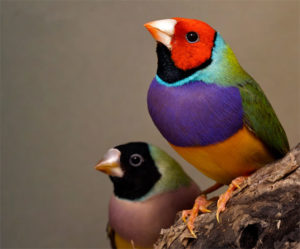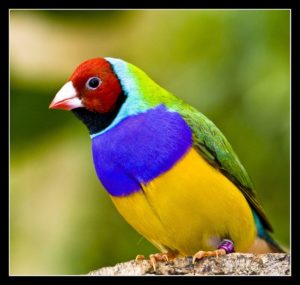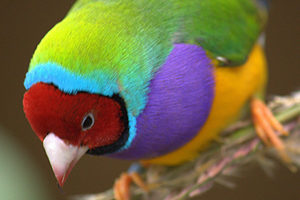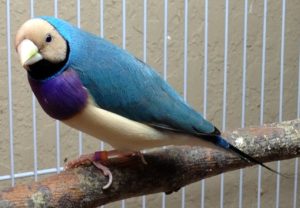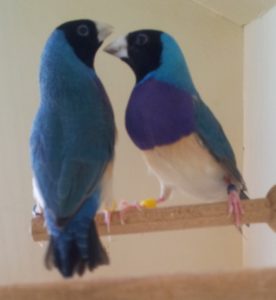May 17
4
Australian Lady Gouldian Finches
Australian Lady Gouldian Finches
“Normal” Green Back – Red and Black Heads
Yellow Back
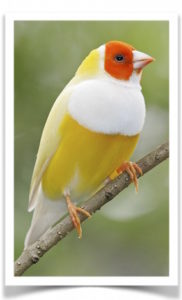 Blue Back
Blue Back
This blue back has a “straw head”
These 2 have black heads – Gorgeous!!
Identification: The Gouldian finch (Erythrura gouldiae), also known as the Lady Gouldian finch, Gould’s finch or the rainbow finch, is a colourful passerine bird endemic to Australia. The Gouldian finch was described by British ornithological artist John Gould in 1844 and named after his wife Elizabeth. It is also known in America as the rainbow finch, Gould’s finch, or the Lady Gouldian finch (although Mrs. Gould did not hold the title lady).
In Australia, it is predominantly called the Gouldian finch. It is a member of the weaver-finch family Estrildidae, which is sometimes considered a subfamily of Passeridae. Both sexes are brightly coloured with black, green, yellow, and red markings. The females tend to be less brightly coloured. Gouldians are small, but they make great aviary birds and appreciate a large, planted garden setting. Green-back Gouldians are known as “normals”.
Geography: Northern Australia
Song/Call: Click to hear the Lady Gouldian
Size/Weight: 5.5″ / 16 – 17 g
Lifespan: Up to 10 years
Sexing: “Normal” Green Backs with red or black heads are generally easy to determine gender. The female Lady Gouldians tend to be less brightly colored.
Yellow-backed Gouldians are not always easily sexed visually. However, generally speaking, the males have a darker purple breast and the females have a lighter purple breast. Some have white breasts and are harder to distinguish the sex.
Blue-backed Gouldians are not always easily sexed visually, however usually the male has a dark purple breast and the female is lighter.
Temperament: Lady Gouldians are pleasant “watching only” birds as they don’t like to be held, and can even panic and die when handled. Stress is deadly for these fragile birds. They are not recommended for beginner avian enthusiasts.
Breeding: Lady Gouldian finches generally make their nests in tree-holes, generally within a kilometer or so of water. They usually breed in the early part of the dry season, when there is plenty of food around. The male courtship dance is a fascinating spectacle. When a male is courting a female, he bobs about ruffling his feathers to show off his colors. He expands his chest and fluffs out his forehead feathers. After mating, a female lays a clutch of about 4–8 eggs. Both parents help brood the eggs during the daytime, and the female stays on the eggs at night. When the eggs hatch, both parents help care for the young.
Gouldian finches leave the nest at between 19 and 23 days and are independent at 40 days old. Goulds should be at least a year old before they are bred. They prefer to nest in a small, covered space, like a wooden nest box or covered basket. The box is preferred because the finch can’t accidentally catch a toe in the woven straw, and the box is also easier to access. Gouldians don’t build great nests, so put some material in the nest to get the parents started.
Diet: Gouldian Finch Seed, Mineral Grit, Cuttle Bone, Dried Egg Food, Herb Salad, Millet Sprays. Liquid iodine is also very important for the lady gouldian diet.
Email me for availability
lorettasbirds@gmail.com
